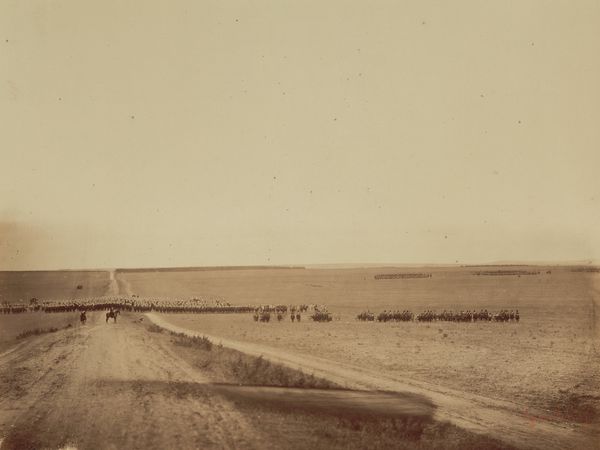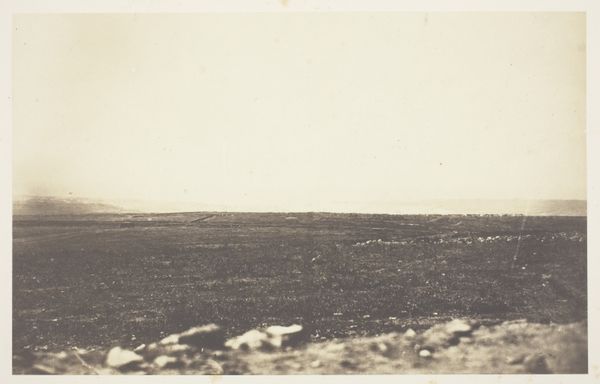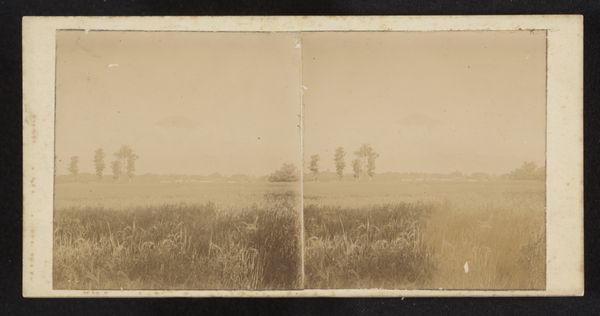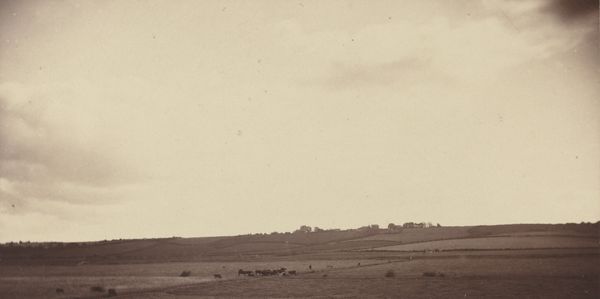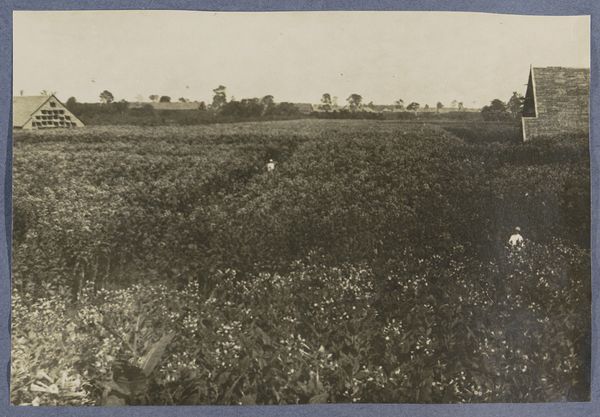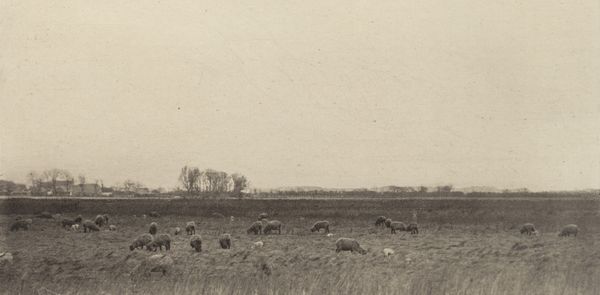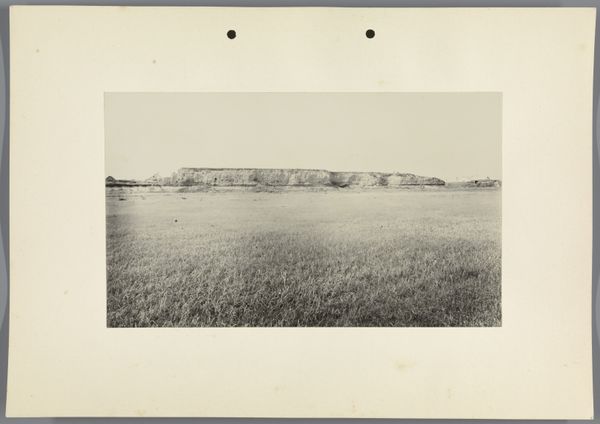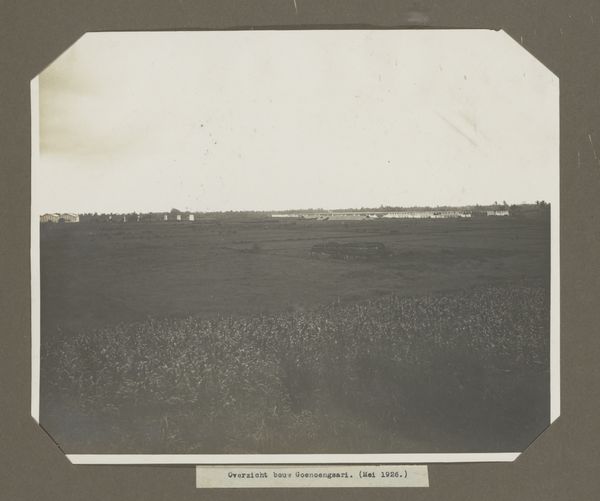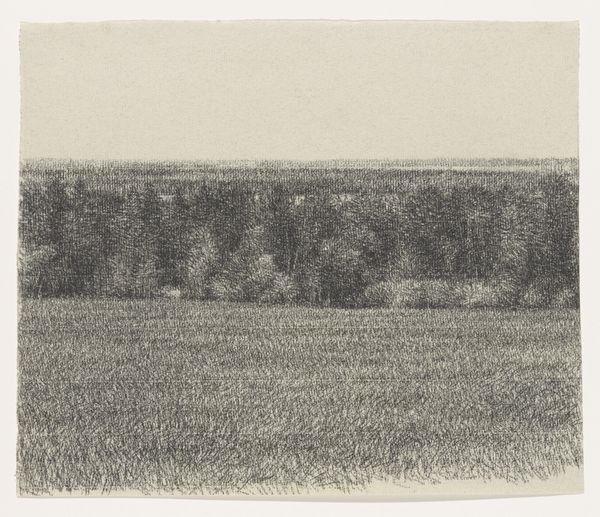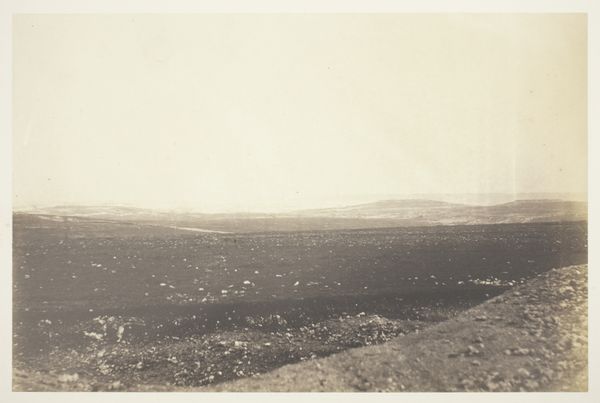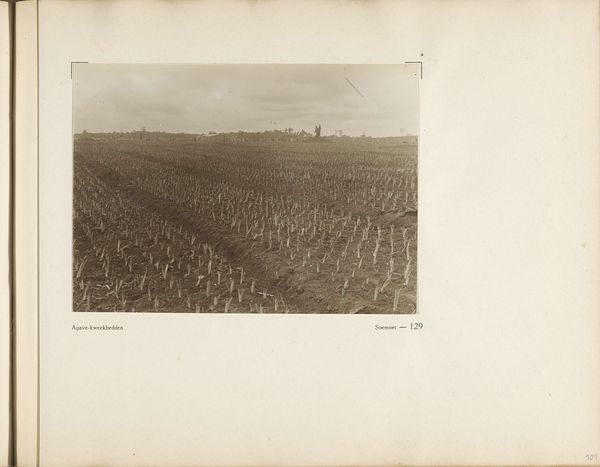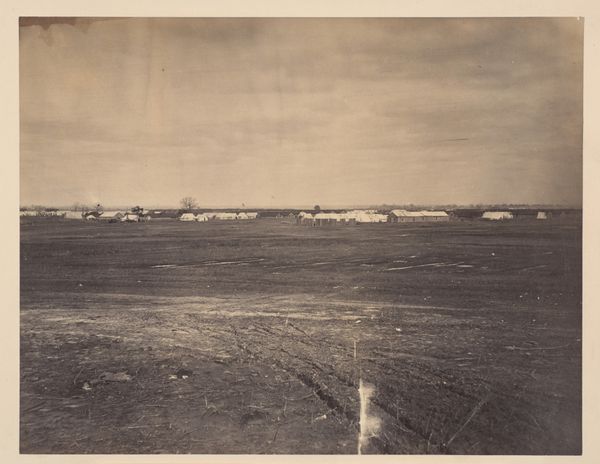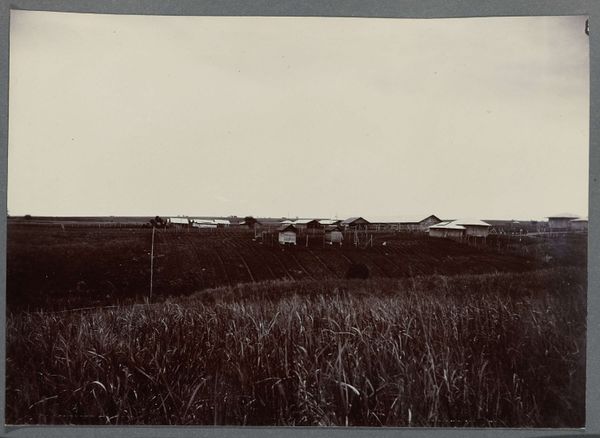
Dimensions: 15.2 × 33.2 cm (image/paper); 52.8 × 63.8 cm (album page)
Copyright: Public Domain
Curator: Gustave Le Gray, a prominent figure in early photography, created this untitled landscape in 1857. He used a gelatin silver printing process. The image resides now at the Art Institute of Chicago. Editor: My initial response is a stark serenity. It’s minimal, almost to the point of abstraction. A vast, open field stretches out to meet an even more expansive sky, creating a sense of solitude and quietude. Curator: The photograph is a wonderful example of the French artistic interest in depicting nature directly—artists leaving their studios and finding their inspiration in the landscape, as you pointed out, with quietude being a main driver. Photography at the time was particularly well-suited to this purpose. Editor: Exactly. However, I can’t help but see more than just quiet observation. The extreme flatness, the horizon line so low and almost imperceptible, creates a palpable tension. Was it about capturing nature, or also about reflecting humanity's smallness against such an overwhelming landscape? I mean it almost feels… hostile. Curator: That’s a compelling interpretation. Le Gray often experimented with combining different negatives to achieve the desired effect, especially when depicting skies and seas. Technical limitations of the era made it difficult to capture both the sky and the land properly. So this artistic intervention was not just about replicating reality but creating a certain drama or mood, serving social needs of the French urban populations, perhaps in longing to rurality. Editor: I see a very controlled drama. It makes me think about the colonial gaze, of claiming space, particularly since this image comes from a time of intense global power struggles. The photograph presents the land almost as devoid of human presence, readily available. That resonates strongly. Curator: An interesting observation. However, I believe the lack of direct human presence allows for universal connection to this rurality as a social project—the open landscape symbolizes freedom, expansion, the chance to start over in the industrial era. And that perhaps also explains the title being Untitled. Editor: Perhaps both. Le Gray might not have intended that colonial reading, but that doesn't erase the image's potential to reflect and perpetuate such views, intended or unintended. Art lives beyond the artist’s intentions. Curator: Very well said. Thank you, that has been a productive and critical point that shows how relevant these old photos still can be to this day. Editor: Absolutely. Analyzing and challenging established notions, that's where the real power of historical art lies.
Comments
No comments
Be the first to comment and join the conversation on the ultimate creative platform.
